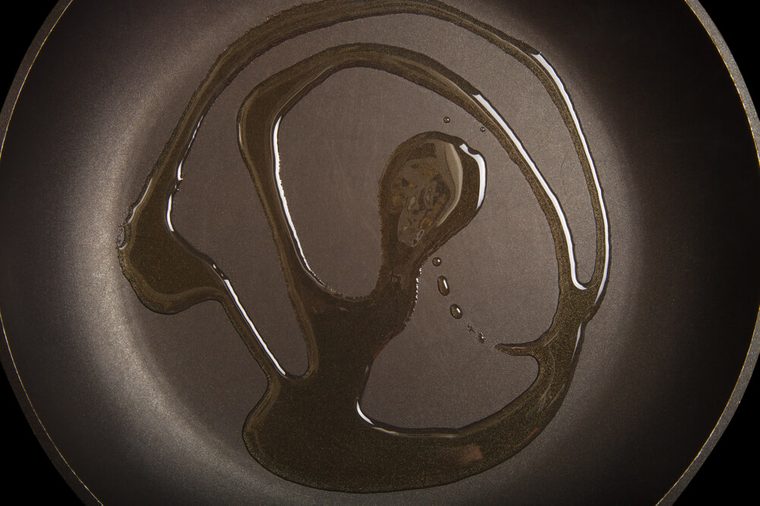
Isn’t an oil an oil?
While cooking oils are a great multi-purpose tool for any kitchen, they’re not created equal. “It’s important to remember that each oil has a unique set of properties, from nutrient status to smoke point, that makes choosing the right one an important decision,” says Sarah Morgan, MS, a functional nutritionist based in Denver, CO. “Oils have different tolerances to light, heat, and oxygen. The most sensitive oils—unsaturated fats—need to be stored and used in a such a way as to protect the beneficial compounds while other, more stable oils—saturated fats—can withstand light, heat, and oxygen.”
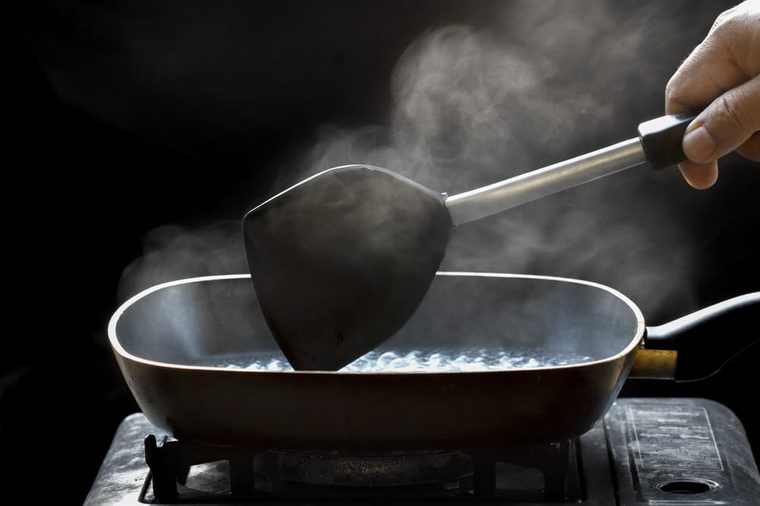
Smoke point explained
Different types of oils have different smoke points—the threshold at which the oil becomes unstable. For high-heat cooking, you want a high smoke point. “It’s an oil that is stable under higher temperatures, meaning it won’t get oxidized, smoke, and become rancid and potentially harmful for consumption,” explains Morgan. You know you’ve reached an oil’s smoke point if your pan starts, well, smoking. “What’s happening is that the oil is decomposing or oxidizing and creating carcinogenic, or cancer-causing free radicals that just turned your attempt at healthy cooking into a recipe for cellular damage,” says Chanté Wiegand, ND, and the director of education of The Synergy Comany, a producer of organic supplements. Here’s what you need to know about the best cooking oils for your health.
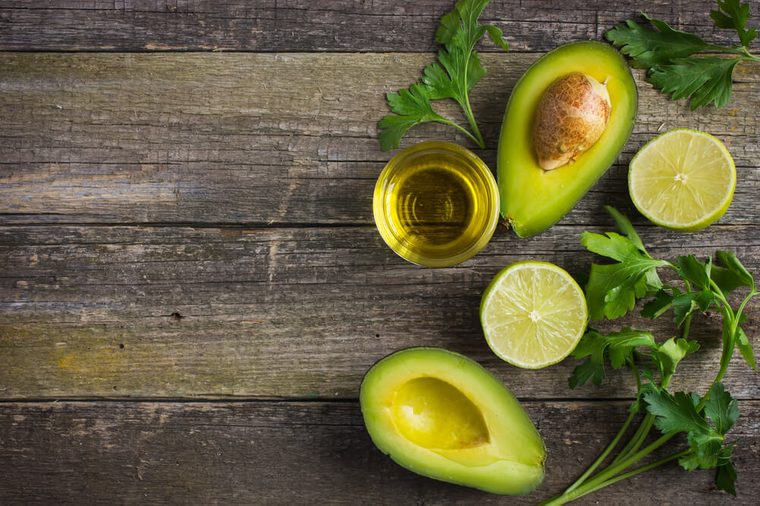
Safest oil for browning in a pan
Many cooks place a pan on the stovetop and then automatically reach for olive oil or extra virgin olive oil. Stop right there! Neither of these oils can stand up to high heat. When it comes to browning, you need a high smoke point, so enter avocado oil. “It’s neutral in flavor, has a smoke point over 500 degrees F, and is high in healthy monounsaturated fats,” explains Wiegand. For another great option, Matthieu Kohlmeyer founder and CEO of the artisanal oil company La Tourangelle, recommends grapeseed oil, with a slightly lower smoke point of 410 degree F. “It’s a home chef’s best friend for high-heat frying because it leaves a crisp texture without added heaviness and won’t turn to smoke and set off the kitchen fire alarm,” he says. Using the wrong oil is one of the cooking mistakes that can make your food toxic.
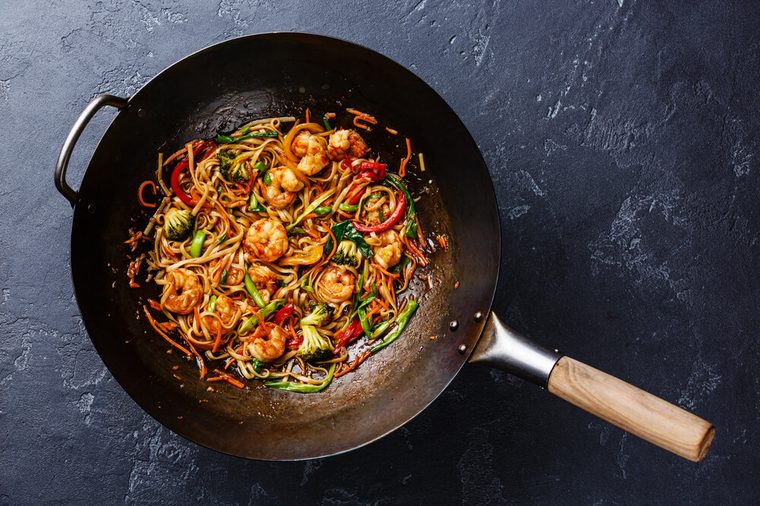
Safest oil for stir-frying
Stir-frying is a food hack that gets dinner on the table fast. But you want to do it safely. “When you’re going to turn your burner above medium, as is the case with stir-fry, high heat oils are the way to go,” says Morgan. “These oils are stable under higher temperatures— meaning they don’t get oxidized, smoke, and become rancid and potentially harmful.” Besides avocado oil, peanut oil, with a smoke point of 450 degrees F, is a great option here.
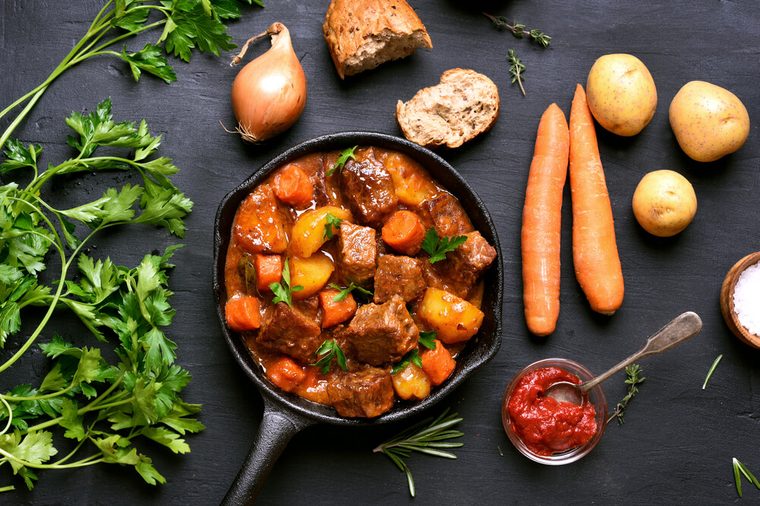
Safest oil for stews
Avocado oil is great for cooking up spicy, savory curries or stews, but if you don’t have any on hand, try safflower oil, made from the seeds of the safflower plant, with a smoke point of 475 degrees F. Like avocado oil, it’s mild, so it won’t interfere with the taste of your curries. Note, however, that while many people regularly use vegetable oils such as safflower, they’re very refined and loaded with the omega-6 fatty acids that most people get too much of in their diets, so use them in moderation.
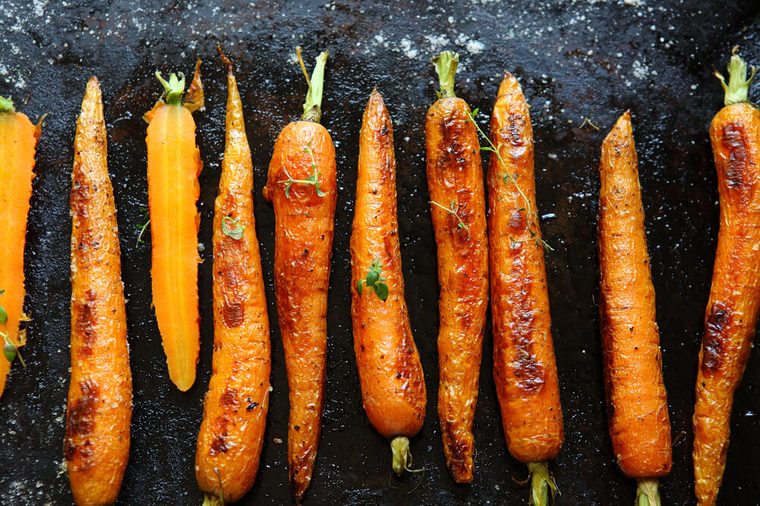
Safest oil for roasting veggies in the oven
For cooking in a hot oven, make sure to grab a high-smoke point oil. Morgan actually reaches for ghee, technically a clarified butter, with a smoke point of 485 degrees F. She likes that ghee, which contains vitamins A, D, and E as well as linoleic acid to help balance cholesterol levels, also adds a nice buttery flavor. Opt for a high-quality ghee made from organic, grass-fed butter. Try ones from Carrington Farms and Ancient Organics.
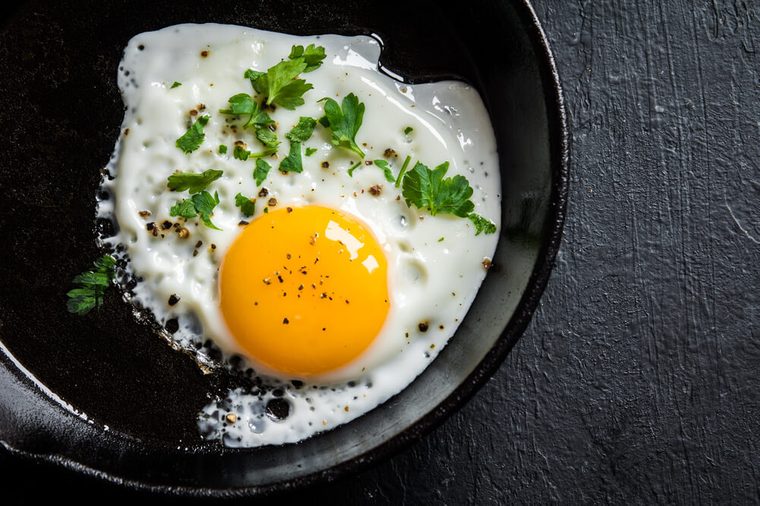
Safest oil for frying an egg
Ghee is great for egg-frying because it will add a buttery flavor and resist smoking in the hot pan. Note that ghee is dairy, even though it’s clarified, meaning the casein/lactose have mostly been removed. “Some people prefer to stay away from dairy,” says Wiegand. “Ghee also contains saturated fats versus monounsaturated fats—both are okay for you in moderation, depending on your needs.” If you’re steering clear of dairy and/or limiting your saturated fat, choose avocado oil.
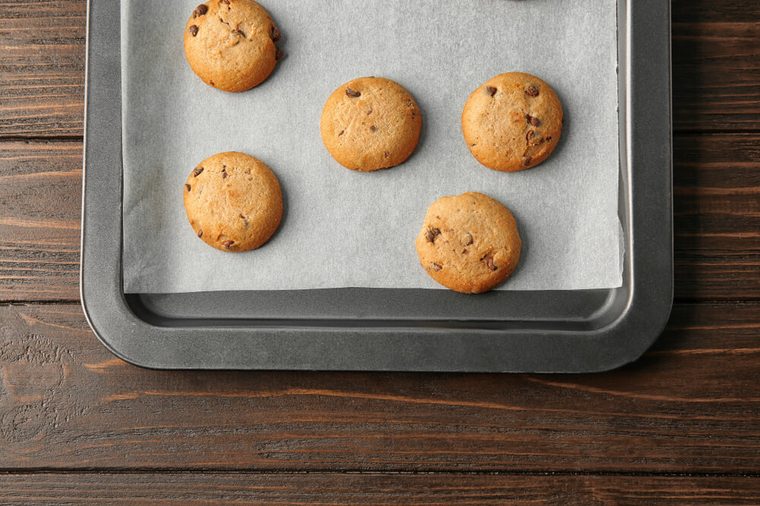
Safest oil for baking
You’ll want to use a medium-heat oil for baking. “These are in a nice in-between place of being able to handle some heat but not appropriate for frying,” says Morgan. “When you’re baking something in the oven, medium-heat oils are protected from damage as they cook inside the muffins, bread, or cookies.” Coconut oil, with a 350 smoke point, is a good medium-heat option here.
But before you start adding it to everything in your kitchen, here’s what nutritionists wish you knew about coconut oil.
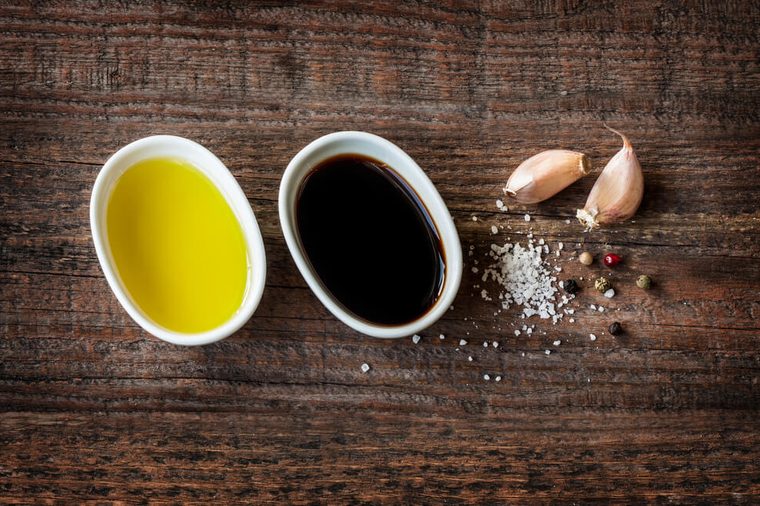
Safest oil for vinaigrettes
When you’re not cooking with oil, you can disregard smoke point entirely and focus on flavor. “Extra-virgin olive oil is obtained from the first pressing of the olives and is cold-pressed, meaning it’s not heated or treated with chemicals during the pressing process, for the most flavorful, healthiest, broad range of flavors,” explains Kelly Toups, MLA, RD, LDN, director of nutrition at Oldways, a nonprofit food and nutrition education organization. “Few foods can rival the decades of health research on extra virgin olive oil, and it’s perfect for vinaigrettes.”
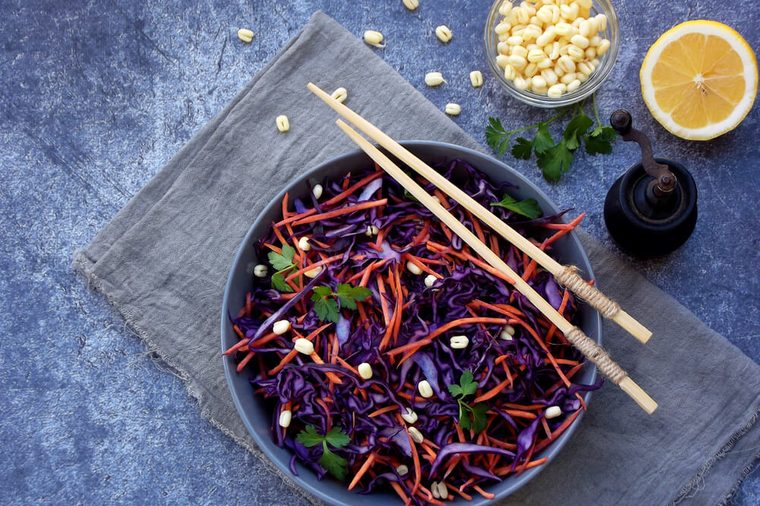
Safest oil for slaws
Toasted sesame oil, popular in Asian cuisine, is a great choice here. “Toasted sesame oil tends to have a stronger aroma and is typically eaten as a condiment in order to preserve the flavor profile,” says Toups, who recommends drizzling it on a cabbage slaw or a soba noodle salad.
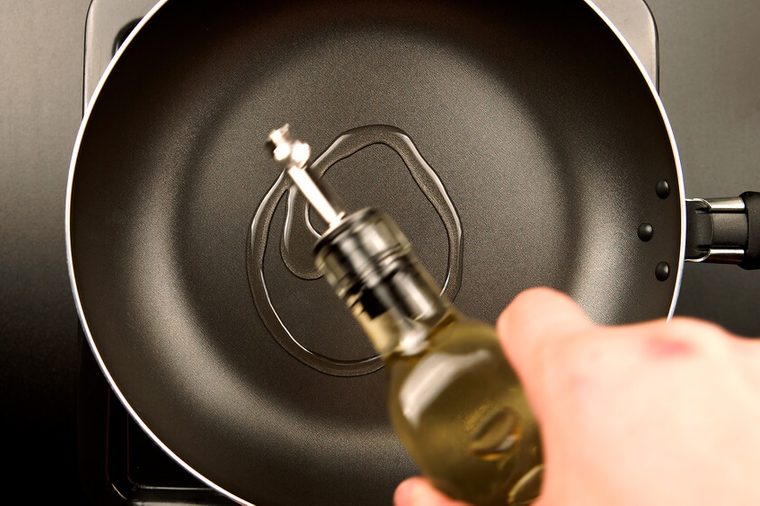
Safest oil for slow cooking
For roasting or slow cooking methods, Morgan recommends grapeseed oil, with a 410 degree F smoke point, or olive oil, with a 375 degree F smoke point, depending on the flavor profile you’re going for. Keep in mind, however, that grapeseed oil has virtually no omega-3 fatty acids and a ton of omega 6’s, which can lead to an unhealthy balance in the body. “Omega-3s reduce inflammation, whereas eating a diet rich in omega-6s can lead to inflammation and weight gain,” says nutritionist Jennifer Silverman.
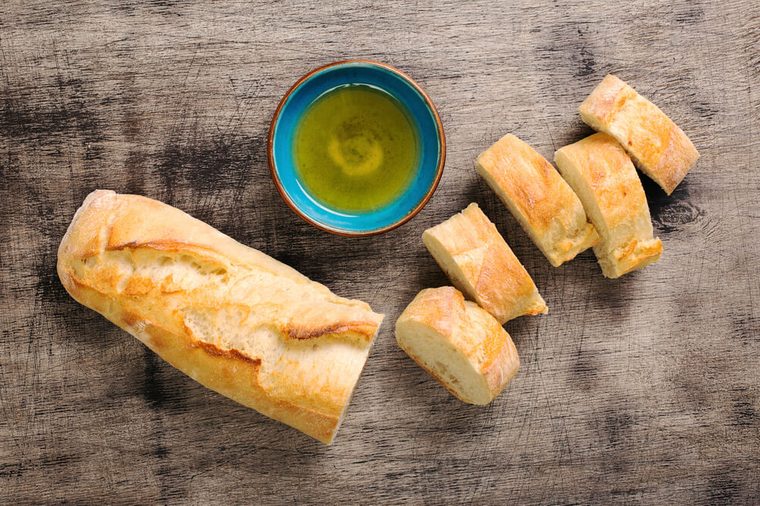
Safest oil for bread dipping
Flaxseed oil, with a low 107 degree F smoke point, is a delicious and heart healthy option next time you find yourself with a hunk of fresh focaccia. “Flaxseed is very sensitive to light, heat, and oxygen, but it contains many healing properties that are beneficial to our health,” says Morgan. “Because it’s unstable with heat, care should be taken to warm it only slightly if at all, meaning it’s great for dipping.” Silverman further cautions that unlike other oils, flaxseed needs to be kept in a refrigerator to retain freshness. “The bottle needs to be kept tightly closed to prevent oxidation, and it needs to be used within six to eight weeks after opening,” she adds.
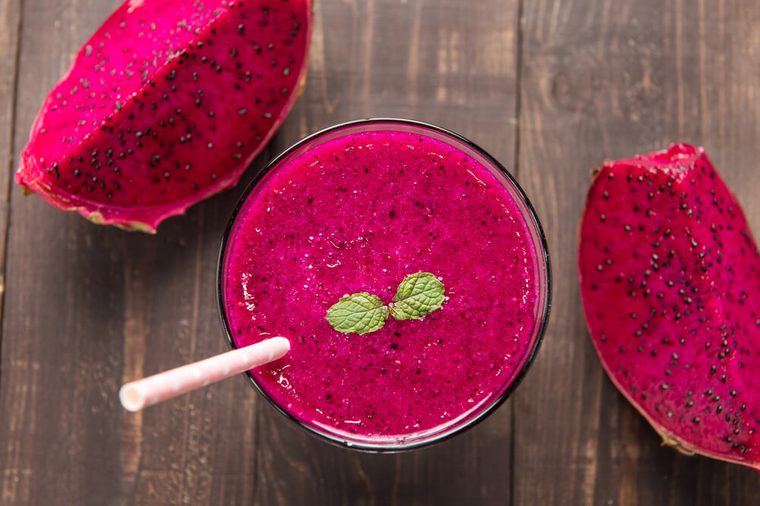
Safest oil for smoothies
Like flaxseed oil, walnut oil, with a low 165 degree F smoke point, and hemp seed oil, with a 160 degree F smoke point, are best eaten raw, as in, without any heat. They work great in smoothies, but also as a tossing oil for salads or warm vegetables once they’re done cooking, for some extra flavor and omega-3 fatty acids.
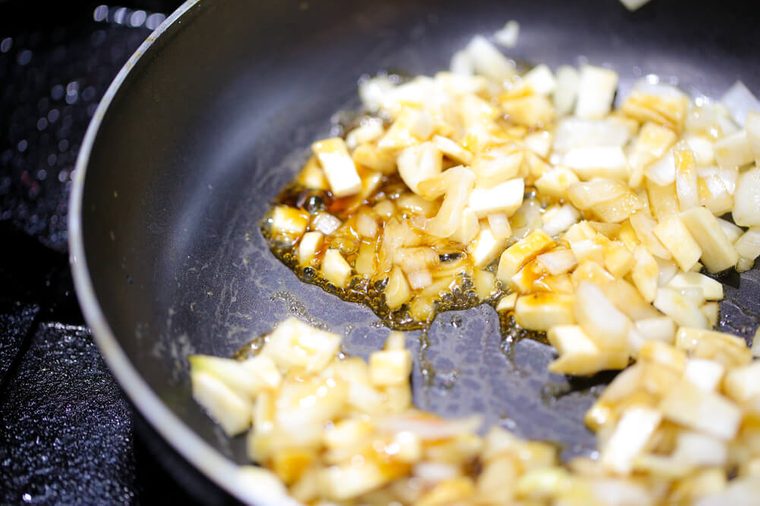
Safest oil for sautéing
Sautéing should be done at medium heat, which makes it perfect for your go-to olive oil. Toups reaches for extra virgin olive oil. “Regular olive oil is less flavorful than extra virgin olive oil, which is fruitier and has a more pronounced olive flavor,” he says. Just be sure to keep the burner on medium to preserve both the flavor and healthful compounds, including flavenols and polyphenols. Here’s why extra virgin olive oil could be the key to longer life.
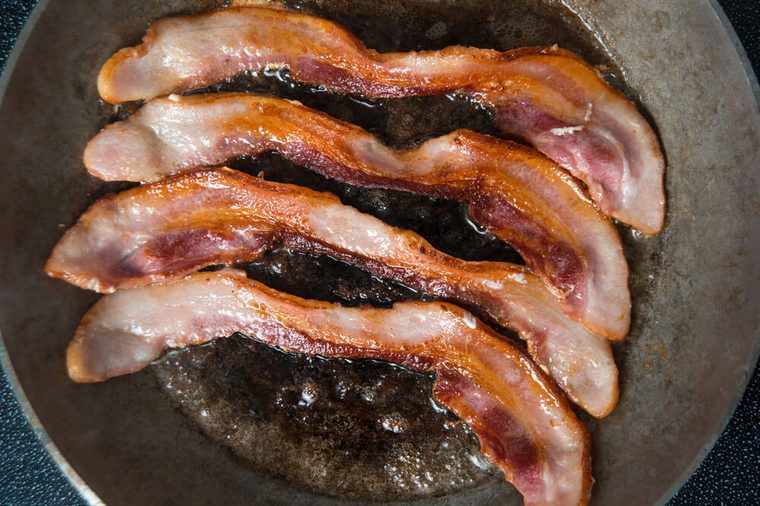
Safest oil for crispy bacon
It’s true that bacon is among the worst foods for your heart. But if you’re going to enjoy it, you might as well cook it safely, to minimize the health effects. The best option here is avocado oil. If that’s not in your budget, try canola oil. “Canola oil can be a suitable option in high heat cooking, even though it lacks some of the antioxidants and polyphenols that you’ll find in pricier options,” says Toups. “Nevertheless, its mild flavor makes it a versatile option to keep in your pantry.”
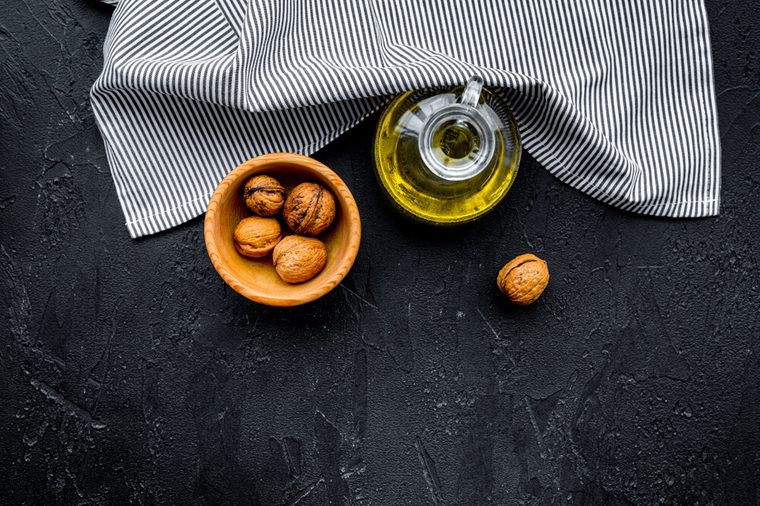
Safest oil for maximum flavor
Terra’s Kitchen‘s chef and creative culinary director Libbie Summers recommends nut oils—walnut, pistachio, hazelnut, and almond—when you want rich flavor. “They’re my go-to salad secret because they each have a distinct, pungent flavor, so a little goes a long way,” she says. “I love to add just a teaspoon to a neutral-tasting oil (like canola) along with a splash of fresh citrus juice, salt, and pepper for the perfect salad dressing.” Pumpkin seed oil also works beautifully as a dressing. “I’m obsessed with it because of its very distinctive nutty taste when used as a finishing oil.” She recommends drizzling it over a vegetable-based soup before serving, adding it to a salad dressing, or simply tossing it with pasta and Parmesan cheese.
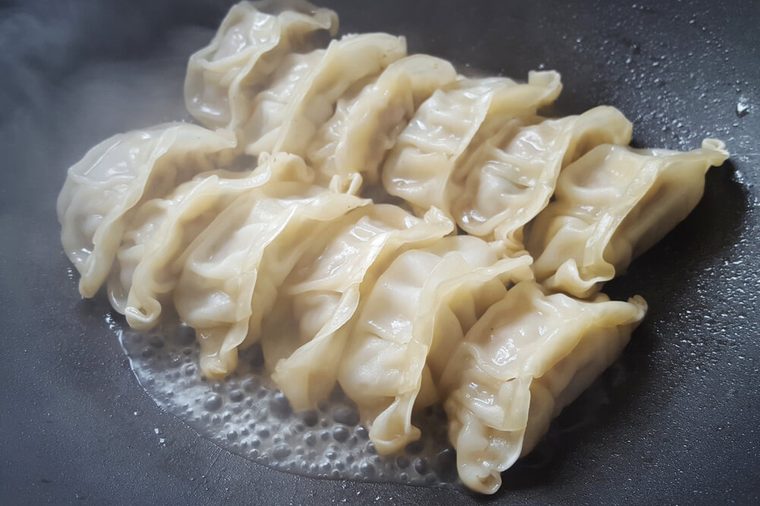
Safest oil for steaming
The beauty of steaming is that you don’t need oil at all, but here’s a trick: “When steaming, coat the steamer with oil before adding your veggies to create a natural, non-stick surface and avoid getting food stuck onto the steamer,” says Kohlmeyer. Grapeseed oil is great for coating purposes, he says, because it greases without imparting any flavor. “This trick comes in handy for those sticky vegetables or Asian dumplings,” he says. “For steaming, definitely avoid a highly flavorful oil such as sesame or walnut oil.”
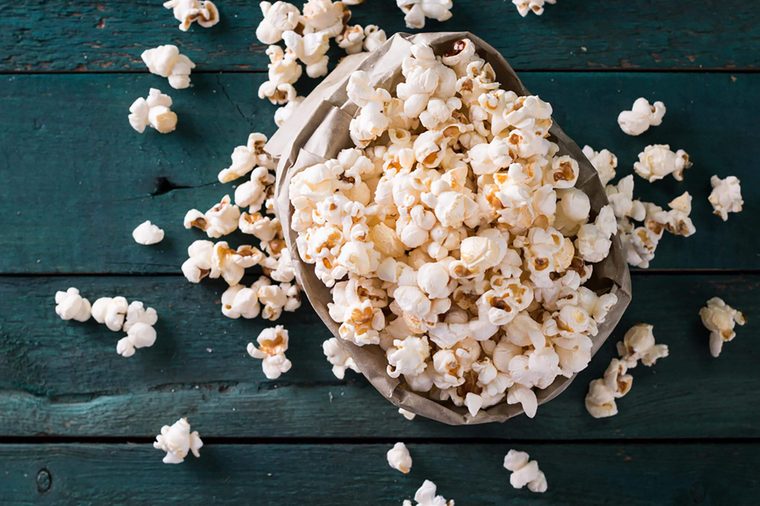
Safest oil for popcorn dressing
There are many reasons eating popcorn is healthy. It gets significantly less healthy, however, when you drown it in butter or the stuff they use at movie theater concession stands (here’s what movie theater popcorn butter is really made of). Instead, consider adding roasted peanut oil or garlic oil. “They make a simple bowl of popcorn a tasty treat,” Kohlmeyer says. Don’t even consider using canola oil as a dressing for popcorn because, as Kohlmeyer says, “it won’t add any flavor and will just make it feel heavy and greasy.”
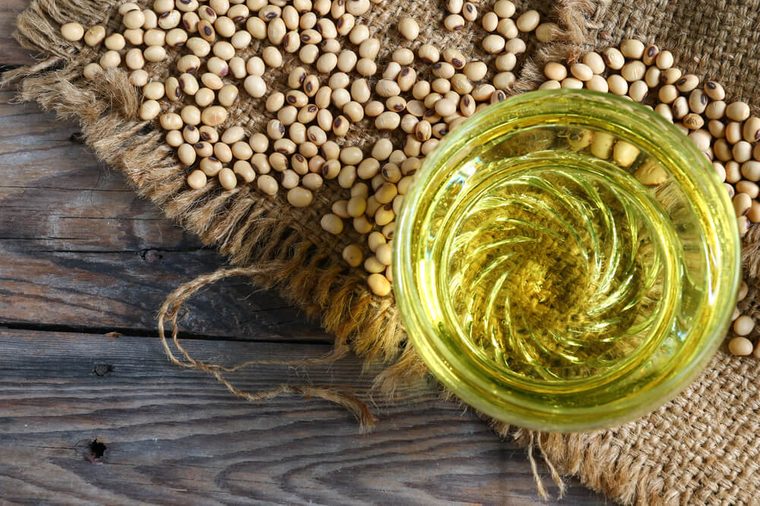
Oils to never use
If a recipe calls for soybean oil or corn oil, consider swapping them out. “Oils are an opportunity to elevate cuisine both with gourmet flavor and highly sought nutrition, and that’s why I personally never use either one,” Kohlmeyer says. “They are more affordable, which is nice, but they simply don’t add anything to either the flavor or the nutrition so I prefer to skip them entirely.”
Check out these other smart ingredient swaps for healthy cooking and baking.
